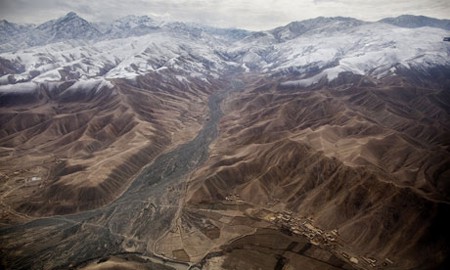By Eleanor Nichol
For all the column inches and hours of negotiations spent discussing Afghanistan's recent past, present and future, one of the most pressing parts of the puzzle remains largely overlooked and poorly understood. The country sits on top of vast mineral deposits, which, if properly managed, offer the best chance of lifting a generation out of poverty and weaning the country off international aid.
Afghanistan houses rich seams of copper, iron, gold, lithium and rare earth deposits worth up to $3 trillion, according to the Afghan government. Unsurprisingly, the government and international community are eager to see these resources exploited. The plan is to sell off rights to access many of the country's mineral deposits over the next three years in the runup to transition in 2014 – potentially releasing a vast amount of revenue for the Afghan economy.
What happens to that money will largely depend on the decisions taken by the Afghan government, its international allies and investing companies over the next three years. With the right systems in place to govern a fast-emerging extractive sector, these revenue streams could bridge the funding gap left by a cash-strapped OECD community that is looking to reduce Afghan dependence on its money post-2014.
But it could just as easily go the other way. The billions of aid dollars invested over the past 10 years have not produced the intended results. As of this January, an estimated $286.4bn had been invested in Afghanistan since the invasion – that's $9,426 per head of population. Despite this spending, the country remains hugely dependent on aid, with many Afghans living on less than $1 a day. Meanwhile, allegations of massive diversion of funds and grand corruption abound. There is very little in place to stop the benefits of the extractive sector following suit. This would not only let a priceless opportunity for much-needed development pass; it could turn the mining sector into a fresh axis of conflict and instability.

Baghlan province, Afghanistan – the country's rich mineral deposits could help to wean it off international aid. (Photo: Benjamin Lowy/Getty Images)
So the stakes are high, and there is not much time to act. The next three years leave a narrow window of opportunity to shape the sector and embed transparency before exploration and extraction starts, and revenues begin to flow in bigger numbers. Once bad practice sets in, it takes decades to undo, by which time the benefits have been lost to the civilian population.
Countries such as Cambodia, Angola and Congo-Brazzaville have all emerged from conflict with huge potential resource wealth, but the benefits have been squandered while basic services have been propped up by donor aid. Meanwhile, the civilian population remains impoverished. Afghanistan can avoid this fate, but must act quickly if it is to do so.
The next few months will be crucial. Before the year is out, conferences in Istanbul and Bonn will decide international strategies on Afghanistan for the coming years. Participants must take this chance to bring together all actors – private and public – to devise a system of checks and balances to ensure that the drive to generate alternative financing for development doesn't end up fuelling conflict or corruption. This means embedding clear processes for the award of extractive concessions; requiring extractive companies to disclose revenue paid to the state on a project-by-project basis; setting up sound legal, regulatory and contractual frameworks that safeguard social, environmental and human rights; publishing beneficial ownership details of companies engaged in the sector; and ensuring Afghans are consulted on, and can monitor, mining activities.
In the country itself, there are promising signs – it is a candidate for the international Extractive Industries Transparency Initiative, a voluntary scheme that brings together government, civil society and companies to build a transparent and accountable extractive sector. The minister of mines, Wahidullah Shahrani, has gone on record in support of greater transparency.
Capitalising on these encouraging signs as well as the opportunities over the next few months could mean Afghanistan can turn the tide and become a world leader in transparent resource management. But if these small but significant gains are to be consolidated, the country's western donors also need to step up. Piling in billions of dollars more without making sure one of the country's biggest potential future industries is in good shape makes no sense for Afghans or for cash-strapped donors.
Donors must use their influence to shape a vibrant, transparent and sustainable economy. This means putting governance and transparency at the heart of their interventions across the board – and linking their aid to this.
It is a well-recognised paradox that some of the world's poorest countries are rich in the natural resources that drive the global economy. Afghanistan fits that profile, but it has the chance to be an exception to this depressing rule because its extractive sector is not properly formed and its minerals have not yet been sold. The international community's legacy in this region will be the subject of fierce debate for a long time to come, so getting to work with the Afghan government on sorting out the mineral sector could prove decisive in the ultimate shape of that legacy.
Eleanor Nichol is a campaign leader for the corruption team at Global Witness



